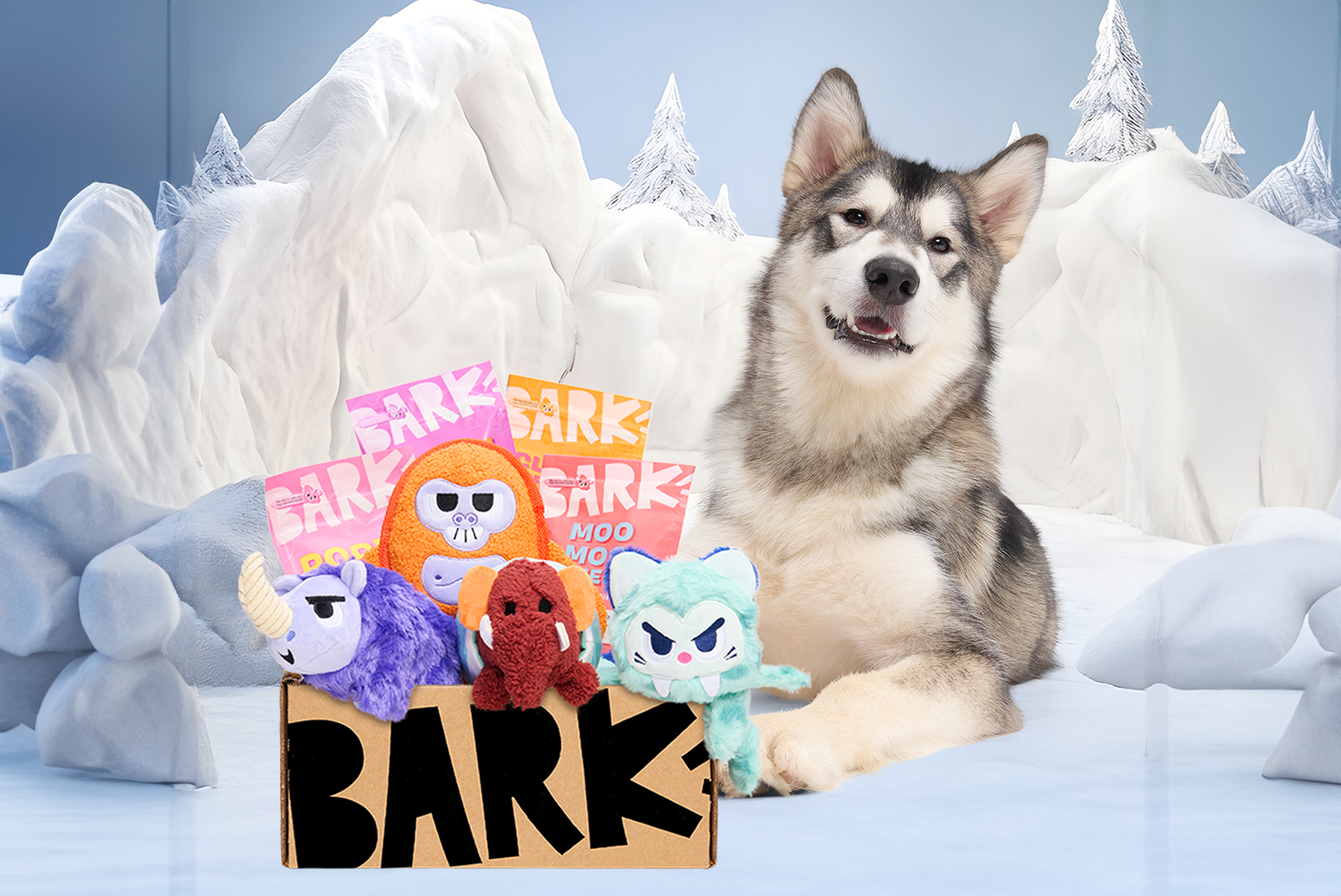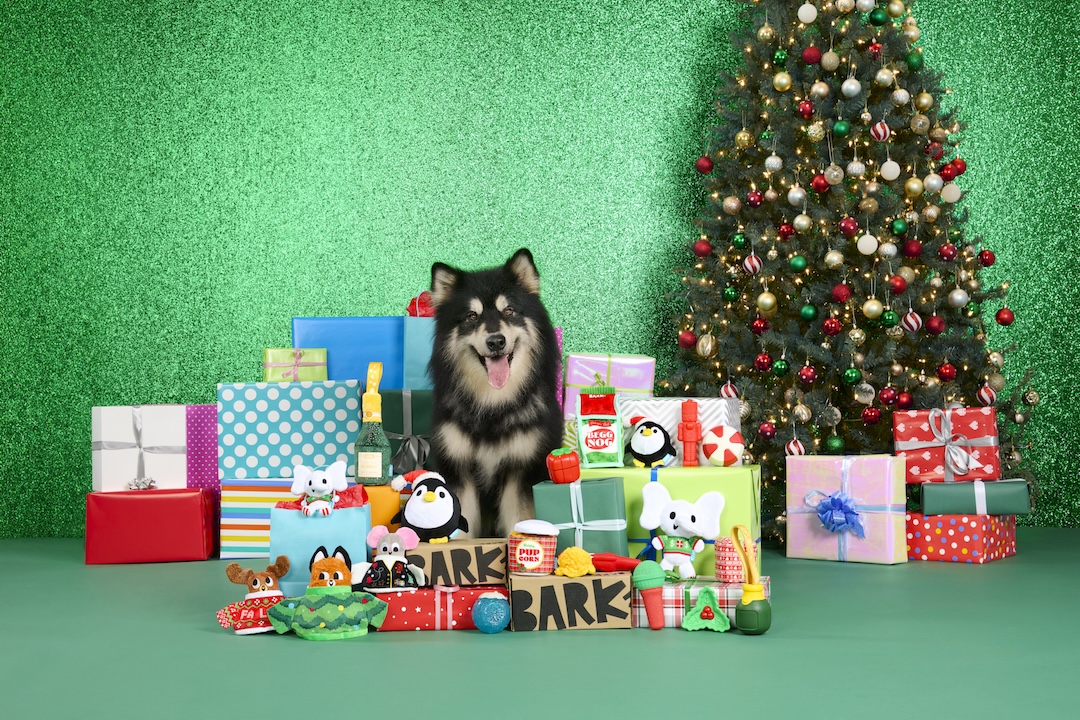Ireland is famous for its many myths and legends: pots of gold at the ends of rainbows, fairies, and the luck of the Irish, to name a few. But there’s some real magic that comes from the Emerald Isle, too.
Enter the shaggy, adorable Irish wolfhound. No leprechaun, the Irish wolfhound is one of the biggest dog breeds of all time, towering above most humans when standing on two legs (and sometimes on four). But the wolfhound’s massive stature only means there’s more to love; underneath that tough, former wolf-hunter exterior is a soft and gentle heart.
If you have the time and energy to handle its needs, bringing home, an Irish wolfhound puppy will make you feel like you’ve just landed in a field of four-leaf clovers.
Breed Overview
Also Known As…
Irish greyhound. Cú Faoil. Irish wolfie. IW. The pride of Saint Patrick, the wizard in disguise. “More of a stallion than an adultdog, really.”
What Is The History Of The Irish Wolfhound?
Given their somewhat imposing size, it’s not altogether surprising that Irish wolfhounds were first recorded during a period of war. Indeed, writings from the second century A.D. suggest that massive dogs and puppies (that sound an awful lot like Irish wolfhounds) accompanied the Celts during their invasion of Delphi.1 Beyond this early sighting, the origins of the Irish wolfhound become somewhat blurred, though legend holds that the Irish and Roman heroes alike prized the “wolfdog” for its prowess as a hunter and its loyalty as a guardian.
The Irish wolfhound’s modern history picks up in the 1500s when Ireland developed a bit of a wild wolf problem. Their solution? Train the loyal hunting hounds to focus on wolves. Over the next few hundred years, the IW did its job a little too well. Irish wolves practically went extinct, and the once-employed wolfhound found itself jobless. Without much work to do, these humongous hounds fell out of favor and, by 1800, nearly went extinct themselves.2
What followed was nothing short of a miracle. Thanks to a dedicated man named Captain George Augustus Graham, Irish wolfhounds went from the brink of disappearance to symbols of Irish pride.2 Today, the Emerald Isle isn’t the only place that loves the Irish wolfhound. While you won’t find them on every corner, you can’t miss ‘em when you do see them.
How Big Do Irish Wolfhounds Get?
Height: 28–35 inches
Weight: 90–150 pounds
How Long Do Irish Wolfhounds (Generally) Live?
Like many big dogs, the Irish wolfhound has a shorter lifespan than the chihuahuas or Shih Tzus of the world. The average lifespan for a healthy Irish wolfhound is 6–10 years.
What Is An Irish Wolfhound’s Temperament & Personality Like?
One look at a massive, muscular Irish wolfhound might have you heading for the hills. But hold your horses! This giant breed is all bark and no bite (and even their barking is super subdued).
In other words, Irish wolfhounds are total softies. With their wolf-chasing days behind them, these wiry wittle wascals have taken to the calm and quiet of suburban family life. Guard dogs these gentle giants are not, even if they are extremely curious and vigilant.
Your gentle giant will likely love you, your family, your friends, and your neighbors. Not only is there more to love with a humungous IW, but there’s also more love to receive.
Of course, it’s worth noting that every dog is different, and it’s impossible to predict a pup’s personality. Still, as a rule of thumb, you can expect your adult dog to be a fairly sociable furball with a pure and loving heart.
Are Irish Wolfhounds Good With Kids? Cats? Dogs?
Little kiddos and big wolfies? Pretty much a match made in heaven. Yeah, your wolfhound and your whippersnappers will become the finest of friends. Your average Irish wolfhound loves spending time with the tots, whether they’re yours or the neighbors’. As always, it’s wise to supervise kid-and-canine playtime, especially during a first meeting. After all, anything this big could accidentally topple a toddler.
Cats? It’s a little harder to say. IWs were raised as hunters, but their typical prey was a lot bigger and, well, wolfier. It’s much more likely that your Irish wolfhound puppy will likely see the family cat as a bestie.
How about other dogs? In most cases, you should be A-OK with border collies, chow chows, Goldendoodles, and all other breeds. As with felines, as long as you socialize your large dog as early as possible, they should be friendly toward the neighborhood Nova Scotia duck-tolling retriever (and the rest of her fellow fuzzballs). Every so often, you may come across an Irish wolfhound that prefers to be a lone wolf, but they’re few and far between.
Do Irish Wolfhounds Need A Lot Of Exercise?
Here’s the thing: IWs aren’t particularly high-energy hounds, but they still need a decent dose of daily exercise. It’s not like they’ll pace around impatiently or tear up the throw pillows when their needs aren’t met. In fact, they’ll gladly lounge around on the La-Z-Boy all day. And that’s the issue; like us, IWs need an active lifestyle to stay healthy. Otherwise, it’s all bad knees and bulging bellies.
Your gentle giantwill need between 1 and 2 hours of exercise daily. Whether that’s chasing a ball, roaming around the block, or hiking the Appalachian Trail is up to you—your war dog ain’t picky.
Are Irish Wolfhounds Hard To Train?
Perhaps because of their long relationship with humans as hunters, Irish wolfhounds respond well to obedience training. They may not win the prize at the local dog show, but they’ll generally listen to your calls and commands, especially if you stick to positive reinforcement training from early on. That’s because IWs are notoriously quick learners. (Don’t be surprised if you come home to discover your hound has figured out how to work the TV.)
Do Irish Wolfhounds Have Health Issues?
All things considered, the Irish wolfhound is a relatively healthy dog breed. While most large dog breeds struggle with their fair share of issues, IWs are a sturdy dog breed. All that time roaming the hills of Ireland must have done them some good.
Nonetheless, IWs—like all breeds—have their unique dog health troubles. Some of the noted problems that crop up more frequently in the ancient breed are:3
- Osteosarcoma (a type of bone cancer)
- Dilated cardiomyopathy (heart disease)
- Pneumonia
- Liver shunt (a developmental disorder)
- Bloat (a rare but dangerous twisting of the stomach)
Other potential issues in this giant breed include eye disorders, hypothyroidism, and joint pains.
With that said, if you’re a current or future IW parent, don’t despair! Many of these dog health problems are preventable (through responsible breeding) and manageable (through modern veterinary medicine). Even if your vet spots a disease or dilemma, there’s usually a treatment for your war dog.
Do Irish Wolfhounds Need To Be Groomed?
Make no mistake: All dogs need grooming. Clipping nails, cleaning ears, and brushing teeth are all part of canine ownership.
As for coat-related grooming, Irish wolfhounds are pretty low maintenance. They shed throughout the year, so haircuts aren’t necessary. If you incorporate a weekly comb and brush into your IW care routine, you’ll be able to keep tangles at bay (and your vacuum cleaner from overheating).
How Much Does It Cost To Care For An Irish Wolfhound?
It’s never easy to guess how much pet ownership will cost, as expenses vary from person to person and region to region. If we have to do some math, we’d place the average cost of caring for an Irish wolfhound at $1,900+ per year.
Food
The bigger the dog, the greater the appetite. IWs are near the top of the giant dog pyramid, so you just know they can pack it away. As (rapidly growing) puppies, Irish wolfhounds can power through 5+ cups of kibble spread throughout the day. For adults, you’re looking at 3–6 cups of dry dog food in a day.
Total it all up, and you can expect to spend $60–100 per month on food.
Wait—what if you didn’t have to spend so much? And you could have big ol’ bags of dog food delivered to you? If you’re looking to save time and cash without sacrificing quality, try BARK Eats! A brand new bag of nutritionist-approved, wolfhound-friendly food will land on your porch every month. Try it today and receive 50% off your first month!
Routine Vet Care (Healthy Dog)
Every pup, healthy or otherwise, should pop into the vet at least twice a year. If you follow this recommended schedule, you might spend around $300/year on hound healthcare.
Common costs include:
- Veterinarian fees ($50–70/visit)
- Vaccines ($20–30/shot)
- Heartworm meds ($50)
And don’t forget about those one-time expenses like spaying or neutering ($150–400) and microchipping (~$70).
Preventative Medications For Irish Wolfhounds
IWs can benefit from your classic preventative healthcare solutions. Translation: You should add flea and tick medication to your shopping cart. Expect to drop about $100–150 per year on these special creams and chews.
For a more Irish wolfhound-specific approach, you may want to consider glucosamine chondroitin. Glucosamine is a supplement—usually delivered in treat form—that aids in the maintenance of healthy joints. Because IWs are susceptible to joint pain and arthritis (as most mammoth dogs are), it can be worth investing ~$120/year on glucosamine chews.
Be sure to talk to your vet before dishing out doggy supplements.
Irish Wolfhound Grooming
Since IWs shed naturally, groomer visits aren’t strictly necessary. If you’re looking to save some cash, here’s an opportunity: Snag a brush, some nail clippers, and a shampoo/conditioner set, and you can avoid paying the $80–150 it costs to bathe these king-sized canines every few months.
Toys, Treats, Beds, & Accessories
Ready to reward your patient pup for sitting so nice during bath time? Set aside at least $60/year for treats and another $75 for durable chew toys.
Or, if you want to reward yourself and your pup, snag some Insta-worthy toys and fancy snacks from BarkBox. With a $23/month subscription, you’ll receive two bags of treats, two cute-as-heck plush toys, and a delicious meaty chew. Step it up to $29/month for double the meaty chews and a pair of wolfhound-proof toys instead. And now, DOUBLE YOUR FIRST BOX FOR FREE!
While you’re out spoiling your Irish wolfhound, don’t forget some of the other essentials:
- A huge dog bed ($65–150)
- A collar and a leash ($30)
- Dog bowls ($20)
- Nail clippers ($15)
Sources:
- Irish Wolfhound Club of America. Early History of the Breed. https://www.iwclubofamerica.org/early-history-starbuck
- Irish Wolfhound Club of America. Revival of the Breed. https://www.iwclubofamerica.org/revival-starbuck
- Irish Wolfhound Club of America. Irish Wolfhound Health and Longevity. https://www.iwclubofamerica.org/health





